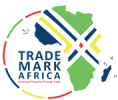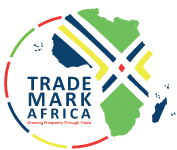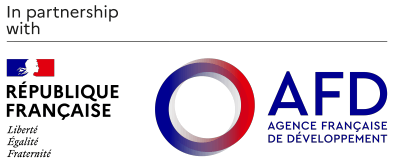The general public and supporters of East Africa’s regional integration are extremely interested in the idea of a six-lane “super-highway” between Mombasa and Kigali reported in last week’s East African, judging by the number of inquiries and words of encouragement TradeMark Africa (TMA) continues to receive on the topic.
The story said that TradeMark Africa (TMA) will facilitate the project. We at TradeMark Africa (TMA) would like to take the opportunity to clarify our involvement in this important concept. At TradeMark Africa (TMA), we aim to reduce East Africa’s high trade costs that are amongst the highest in the world, in order to unleash better competitiveness, more economic growth and trade across the region. TradeMark Africa (TMA) is an East African multi-donor funded development agency which is supporting the private sector, East African governments and the East African Community.
TradeMark Africa (TMA) will support such a project if East Africa’s key stakeholders such as national governments, the private sector and the EAC want to pursue it. The super-highway is a highly transformational idea, a concept that has grown out of our discussions at different fora with various national and regional institutions in the East Africa Community (EAC) member states. There is a lot of interest in the concept, but it is not yet a “project.” Based on this considerable interest, TradeMark Africa (TMA) will undertake a series of analytical studies to look more closely at the concept on several levels. We will then be taking these ideas and presenting them to key policy makers at the EAC and member states over the next six months. If the ideas are realistic, finance is available and there is sufficient support and leadership for this idea, we will support its realisation as a core part of our Phase 2 work. But it will take some time to get to that stage.
The super-highway concept is important as a highly transformational idea that could help the region overcome some of the core challenges to growth. Although transport costs have marginally declined in the region, the high cost of doing business is crippling. Inadequate physical infrastructure and inefficiency mean corridor operations entail long transit times and high costs.Freight costs per km are more than 50 per cent higher than in the United States and Europe; for the EAC’s landlocked countries, transport costs can be as high as 75 per cent of the value of exports. It is actually cheaper to export a container from Singapore to Mombasa than it is to export the same container from Mombasa to Bujumbura. This is untenable and makes the region highly uncompetitive. Modernisation of transport infrastructure and removal of non-tariff barriers along these corridors is critical for trade expansion, economic growth, and regional integration—all of which contribute to creating prosperity and alleviating poverty in East Africa. If these severe constraints are addressed, the region will realise its potential, and East Africa’s young people will get the jobs they so desperately need, and the war on poverty will be won.
So what would the idea of the super-highway look like at a conceptual level? First it’s about creating an infrastructure highway that is a trade artery for more than 200 million people which is fit for purpose given the rapid development and opportunities happening across our region. This means a road that is not narrow, dilapidated, unsafe and riddled with potholes, rather a modern purpose built highway that is well maintained and allows for modern transit and transport systems which are both efficient, fast and that critically interface with rail and water transport systems, and modern logistics supply chain management. The idea of upgrading East Africa’s key trade arteries is not new. The Tripartite and IGAD Infrastructure Investment Conference in 2011, East African Community Heads of State meeting last year and the Project for Infrastructure Development for Africa (PIDA) have advocated the concept. The challenge will be to make the concept work simultaneously at a regional and national level under the EAC’s leadership, and to harness the potential for private sector investment to mobilise significant resources required to realise the concept. The idea of the superhighway will be something that TradeMark Africa (TMA) will support should the regional and national institutions be keen to take it up and an approach to these issues.
Second the super-highway will also be a policy highway, realising East Africa’s vision of a fully-fledged customs union and common market. There has been remarkable progress in realising the EAC single customs territory and the superhighway will be a concrete manifestation of this vision. Under the EAC’s leadership cutting edge policies will allow for uninterrupted free movement of people, goods and services. There would be no weighbridges, police checks nor Non Tariff Barriers along this highway. There would even be special lanes at border posts for approved vehicles to pass through without stopping. Traders and transporters using this superhighway would be automatically cleared in Mombasa through an approved Authorized Economic Operator (AEO) programme. Security concerns would be incorporated, of course, into usage and operations of the superhighway to eliminate concerns about abuse of the system. Enhanced regulation would allow for free competition and the potential for a regional Special Economic Zone could anchor investment within a designated perimeter of the super-highway. Much of these policies are again not new, they operate in other common markets such as Europe, but the combination with upgraded infrastructure could be very powerful.
Third the super-highway will also be an information technology (IT) highway. In order to move to world-class competitiveness, East Africa’s businesses will need to have access to cutting-edge technologies to reduce the risks of importing and exporting, and increase reliability. This will mean they can become more efficient in managing their supply chains and become again more competitive. The technology to do so is out there both within the region and across the globe, but it will need investment. The IT super-highway will incorporate traffic management systems, pre-clearance systems, single windows, electronic warehousing and real-time cargo tracking, and super-highway efficiency tracking. The information will help drive certainty and reduce inefficiency that cripples East Africa’s ability to compete.
The combination of infrastructure, policy and technology comprise the concept of the super-highway. The idea contains out of the box thinking that if realised, could significantly cut the high costs of transport, increase intra-regional trade, and help realise the EAC’s vision of prosperity for all East Africans. According to International research, if East Africa reduces its transport costs by 10%, trade could increase by more than 20%, and raise growth rates by up to 1% per annum. This would create jobs for the region’s youth and improve incomes for millions of East Africans. A trade boost of that size would have huge significance for the region. TradeMark Africa (TMA)’s research work will estimate the costs of realising the super-highway and the potential benefits as part of its initial scoping work.
Is the idea infeasible? We believe it is, if the political will and investment funds are available. It’s also being realised in other parts of Africa as we write. The Economic Community of West African States (ECOWAS) has adopted an action plan to speed up the building of a six-lane highway running from Lagos, Nigeria, through Accra (Ghana), Cotonou (Benin), Lome (Togo), to Abidjan (Ivory Coast).
More than 1,000 km long, the corridor is the most important segment of the Trans-West African Highway Network. This will connect some of the largest and economically vibrant cities in the region to seaports and landlocked countries such as Burkina Faso, Mali and Niger, spreading trade, the engine of economic growth and poverty reduction. The project will start next year. Funding will be a new model with countries pooling resources and a variety of donor agencies and development partners supporting it. The countries that the road will cross will enter into arrangements with private investors under a public-private partnership with a view to facilitating trade.At the root of this plan is the notion that trade can spur the region’s economic growth and social development.
The super-highway concept could transform our region into the most attractive place to invest in Africa: where firms could operate freely within an EAC Common market, there is world-class competitiveness, goods are not impeded by inefficient and burdensome red tape but rather supported by modern systems of clearance, logistics and transport. This dream isn’t a distant one, it is one that East Africa’s leaders and policy makers are already thinking about and that we are proud to be associated with. Perhaps it’s time has come. We will be delighted to update the region on the progress of this idea.















